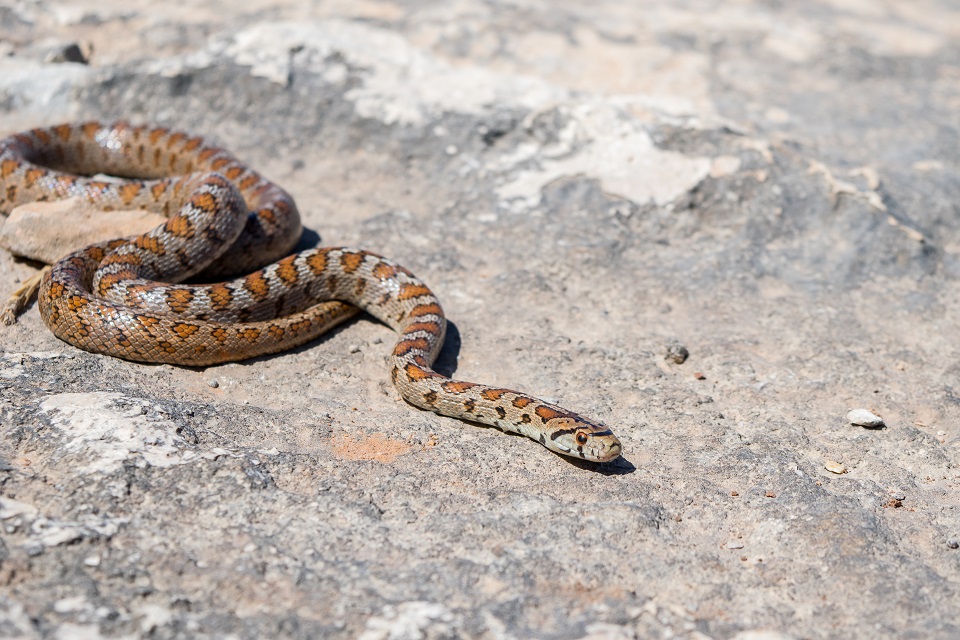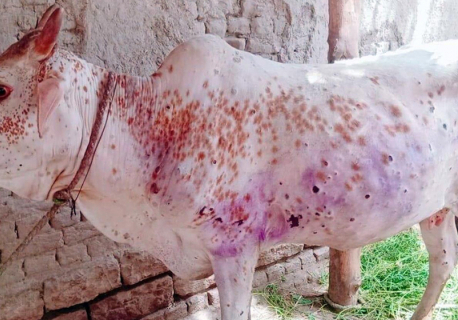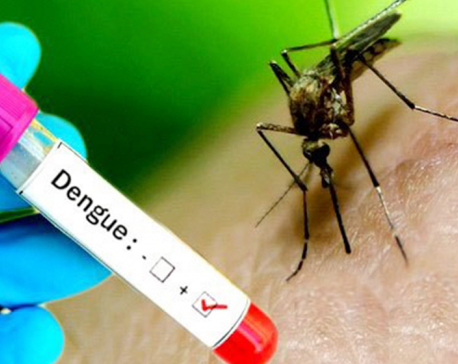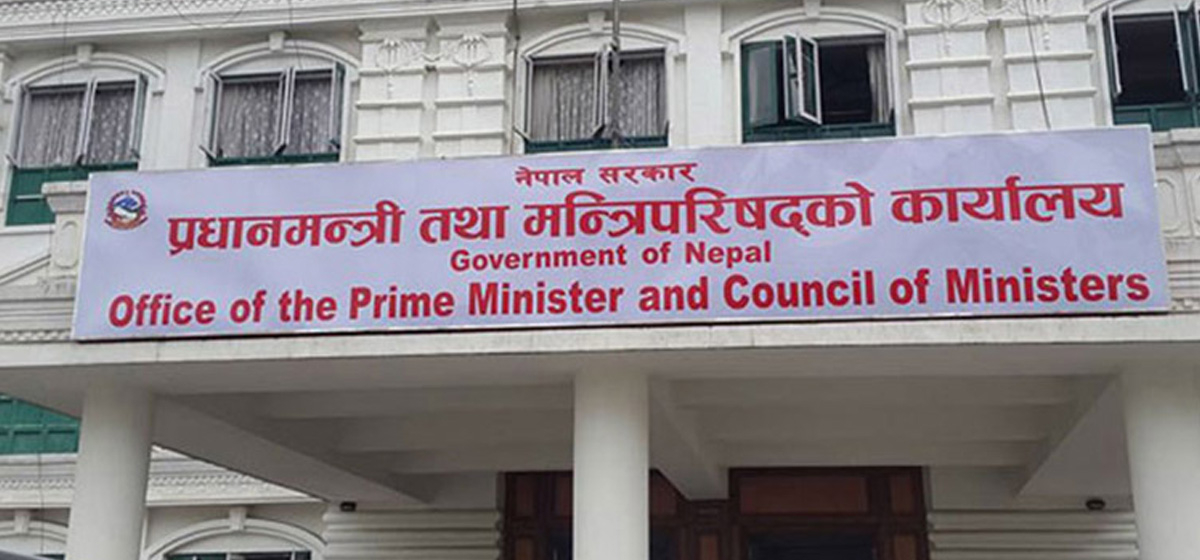
OR
Snakebite outbreak on the rise as rainy summer continues
Published On: July 13, 2023 03:14 PM NPT By: Pabitra Sunar

At least nine people killed due to snake bite since mid-April
KATHMANDU, July 13: The Epidemiology and Disease Control Division, based in Teku, has recently reported a surge in snakebite cases due to the ongoing rainy season and summer weather. Tragically, at least nine people have lost their lives as a result of snakebites thus far.
According to official data from the department, these fatalities have occurred since the Nepali month of Baisakh (mid-April to mid-May). Historical statistics indicate that Nepal experiences an average of 15 to 20 snakebite-related deaths each year.
Sukraraj Tropical and Infectious Disease Hospital in Kathmandu has received a total of 150 patients seeking treatment for snakebite injuries. As of Tuesday, 15 people remain admitted and are currently undergoing medical care. Manisha Rawal, the hospital's director, noted that there has been a recent increase in snakebite incidents, with an average of 10 to 15 patients arriving daily for treatment.
The Zoonotic and Other Communicable Disease Control section has issued a public advisory, urging people to take precautions to avoid snake bites, as the favorable season for such incidents is expected to persist for another two to six weeks. Dr Hemant Ojha, the head of the zoonotic section, expressed concern, stating, "Over the next one and a half months, we anticipate a rise in snakebite cases. It is crucial for everyone to remain vigilant." Dr Ojha further emphasized that approximately 1,000 people in Nepal fall victim to snake bites annually, resulting in an estimated 15 to 20 fatalities.
Dr Ojha provided further insights, revealing that 40 percent of snakebite victims pass away within their communities, while another 40 percent succumb to their injuries on the way to medical facilities. Shockingly, the remaining 20 percent's information does not even reach the central authorities. These distressing statistics indicate that approximately 100 deaths occur in Nepal each year due to snake bites.
Medical experts have explained that snakes emerge from their habitats during the summer and rainy seasons in search of food. These reptiles, including poisonous species, target food sources such as chickens, frogs, and rats, often leading them to venture into areas like chicken cages, rat-infested houses, and dense bushes. Unfortunately, human encounters with snakes in such situations can result in snakebite incidents.
It has been observed that the Terai districts, in comparison to hilly areas, harbor a higher number of venomous snakes, consequently leading to a greater incidence of snakebite-related fatalities in the region. Among the victims, farmers make up a significant proportion.
Doctors have identified several risk factors associated with snakebites. People are particularly vulnerable when they sleep without using protective measures such as hammocks, fail to inspect their surroundings for snakes before going to bed, and neglect to wear plastic boots or gloves while traversing through bushes or fields.
"Even today, due to prevalent misconceptions and confusion surrounding snakebites, treatment options, and snake species, many individuals lose their lives due to delayed or inadequate medical attention," remarked Dr Ojha. He further added, "Following a snakebite, there is often no accurate information available regarding the venomous nature of the snake. Consequently, individuals in the community tend to rely on guesswork, resort to traditional healers, apply herbal remedies like vermilion and weeds, resulting in fatal consequences due to delayed medical treatment."
Understanding symptoms and urgent actions for snakebite victims
In the aftermath of a snakebite, the appearance of symptoms can vary depending on the potency of the venom and the type of snake involved. Symptoms of a venomous snakebite include intense pain at the site of the bite, bleeding from the affected area, protrusion of the tongue, stiffness in the neck, difficulty in opening the eyes, abdominal pain, and even fainting.
As these symptoms escalate, the patient's life may be at risk. Therefore, it is crucial for individuals who have been bitten by a snake to remain calm, avoid moving the affected area, promptly contact their relatives, arrange for transportation, and swiftly reach the nearest snakebite treatment center. Medical professionals emphasize that these measures greatly enhance the chances of surviving a snakebite.
The Zoonotic Section of Epidemiology and Disease Control Division states that there are 90 snakebite treatment centers at government hospitals across the country. Additionally, they annually supply 20,000 vials of snakebite medicine. Collaborating with the Rotary Club, various public awareness programs are being conducted to educate communities about the dangers of snakebites and the necessary preventive measures.
You May Like This

Govt. to give compensation for losses caused due to lumpy skin disease
KATHMANDU, Aug 29: The National Development Action Committee has decided to sort out the issues of electricity wire, telephone cable... Read More...

More than 54,000 dengue infections in six months
KATHMANDU, Dec 11: The dengue infection has been confirmed in more than 54,000 people in Nepal in the last six... Read More...

Do I need to take precautions at hotels if I’m vaccinated?
Most people won’t need to, but it depends on your situation. The U.S. Centers for Disease Control and Prevention says... Read More...




Just In
- Second day of Nepal Investment Summit to feature diverse discussions
- Ilam-2 by-election: UML’s Nembang leads by 4,523 votes
- UML’s Bhandari secures victory in Bajhang-1 by-election
- CIB probe into fake DL distribution case: PMO pressures public prosecutor to free arrested govt employees
- Police report one death in Bhojpur jeep accident
- Nepal faces Bangladesh Red in int'l U-19 Volleyball Championship final
- Nepal Investment Summit: Two organizations sign MoU for PPP cooperation
- Sita Air flight to Ramechhap returns to Kathmandu due to hydraulics issue















Leave A Comment